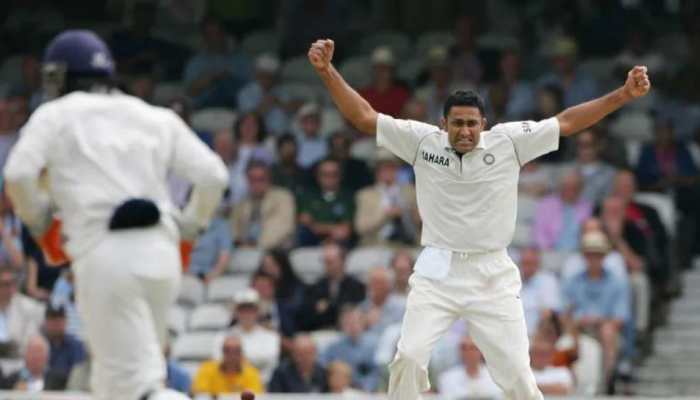One year of Chandrayaan-2, India's second moon mission to study south pole of lunar surface
Chandrayaan-2 completed one year of its launch by a GSLV MkIII –M1 on July 22. On this day in 2019, the GSLV rocket, nicknamed `Bahubali`, blasted off from the second launch pad at Sriharikota in Andhra Pradesh. The Chandrayaan-2 spacecraft was inserted into lunar orbit on August 20, 2019.
- On this day in 2019, the GSLV rocket, nicknamed `Bahubali`, blasted off from the second launch pad at Sriharikota in Andhra Pradesh.
- The aim of the mission was to studying all the areas combining the exosphere, the surface as well as the sub-surface of the moon in a single mission.
Trending Photos
)
New Delhi: Chandrayaan-2 completed one year of its launch by a GSLV MkIII –M1 on July 22. On this day in 2019, the GSLV rocket, nicknamed `Bahubali`, blasted off from the second launch pad at Sriharikota in Andhra Pradesh. The Chandrayaan-2 spacecraft was inserted into lunar orbit on August 20, 2019.
The Chandrayaan-2 mission is a highly complex mission, it represents a significant technological leap compared to previous missions undertaken by Indian Space Research Organisation (ISRO). The mission brought together an Orbiter, Lander and Rover with the goal of exploring the south side of the Moon.
The south pole of the moon is interesting because of the surface area that remains in shadow is much larger than that of the area in the North Pole. There could be a possibility of presence of water in the permanently shadowed areas. In addition, South Pole region has craters that are cold traps and contain a fossil record of the early Solar System.
The aim of the mission was to study all the areas combining the exosphere, the surface as well as the sub-surface of the moon in a single mission.
Meanwhile, ISRO on Tuesday said that all eight payloads on Chandrayaan-2 were performing well. The global mapping of lunar surface and polar coverage are being carried out as per the mission plan.
ISRO also informed that extensive data has been acquired from Chandrayaan-2 payloads. The report on the major findings from Chandrayaan-2 science experiments was planned to be released at the Annual Lunar Planetary Science Conference in March 2020; however due to COVID-19, it has been cancelled.
Public release of Science data from Chandrayaan-2 for global use will begin in October 2020, wherein details for accessing the data will be provided.
Stay informed on all the latest news, real-time breaking news updates, and follow all the important headlines in india news and world News on Zee News.
Live Tv







)
)
)
)
)
)
)
)
)
)
